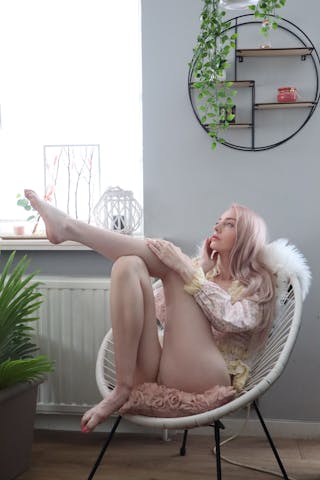The idea of sexual orientation being a choice is a controversial and often misunderstood topic. In the LGBTQ+ community, bisexuality is often met with skepticism and disbelief, with many people assuming that it's just a phase or a way to avoid coming out as gay. But what if being bisexual was actually a choice? What would that mean for the individuals who identify as such, and for the larger conversation around sexual orientation and identity?
Have you ever wondered what it's really like to navigate the world of dating and relationships as a bisexual person? It's time to debunk the myth that being bisexual is a choice once and for all. There's no denying that sexuality is a complex and deeply personal aspect of our identity. If you're curious to learn more about the lived experiences of bisexual individuals and the challenges they face, check out this eye-opening article on Success in Dating.
Defining Bisexuality
Explore new pleasure strategies for ultimate satisfaction and try it out with an open mind and willingness to experiment.
Before we delve into the idea of bisexuality being a choice, it's important to first understand what bisexuality actually means. Bisexuality is the romantic or sexual attraction to people of more than one gender. This can include attraction to both men and women, as well as non-binary individuals. It's important to note that bisexuality is not a binary concept, and individuals who identify as bisexual may have different preferences and experiences.
Explore new ways to connect with your partner and embrace intimacy at Swingfields - it's the perfect opportunity to try something new together.
The Myth of Choice
Discover the best dating app options in Australia
One of the biggest challenges that bisexual individuals face is the misconception that their sexual orientation is a choice. This myth stems from a lack of understanding and empathy for the experiences of bisexual individuals, and it can be incredibly harmful. The idea that bisexuality is a choice invalidates the lived experiences of those who identify as such, and can lead to feelings of shame and confusion.
The Reality of Bisexuality
For many people, their sexual orientation is not a choice, but rather an inherent part of who they are. Bisexual individuals often experience attraction to multiple genders from a young age, and their experiences are valid and real. It's important to listen to and believe the experiences of bisexual individuals, rather than dismissing their identities as a choice.
The Impact of Stereotypes
Stereotypes and misconceptions about bisexuality can have a significant impact on the mental health and well-being of bisexual individuals. These stereotypes can lead to feelings of isolation and invisibility, as well as internalized biphobia. It's crucial to challenge these stereotypes and create a more inclusive and understanding environment for all members of the LGBTQ+ community.
The Intersection of Choice and Identity
While it's important to recognize that sexual orientation is not a choice for many people, it's also important to acknowledge the complexity of identity. For some individuals, the process of understanding and accepting their bisexuality may involve a degree of choice. This could include choosing to embrace their attraction to multiple genders, and to reject societal norms and expectations.
The Power of Self-Acceptance
Regardless of whether bisexuality is a choice or not, it's crucial to support and validate the experiences of bisexual individuals. This means creating spaces where people feel comfortable expressing their identities, and working to dismantle the stigma and discrimination that bisexual individuals often face. It also means recognizing the agency and autonomy of individuals to define and understand their own identities.
Moving Forward
As we continue to have conversations about sexual orientation and identity, it's important to approach these topics with empathy and understanding. This means listening to the experiences of bisexual individuals, challenging stereotypes and misconceptions, and creating inclusive spaces for all members of the LGBTQ+ community. By doing so, we can work towards a more accepting and affirming society for all.
- https://fuck-apps.themountaintopplay.com/posts/sex-and-the-single-revisited-your-dating-diaries-2022/
- https://online-personals.fu-direct.net/posts/ghostlighting-is-the-new-dating-trend-were-already-tired-of/
- https://find-a-girlfriend.fu-direct.net/
- https://meet-women.ua-sex.com/posts/i-tried-the-tiktokfamous-rose-sex-toy/
- https://fuck-apps.ua-sex.com/posts/
- https://dating-chat-room.fu-direct.net/posts/my-best-sex-ever-was-when-i-dominated-him/
- https://personals-website.thehottieandthenottie.com/posts/6-things-you-should-know-about-cleaning-your-sex-toys/
- https://hookupsites.thehottieandthenottie.com/posts/9-ways-to-make-your-boyfriend-better-at-oral-sex/
- https://dating-website.themountaintopplay.com/posts/calling-my-dating-app-matches-was-so-worth-it/
- https://local-personals.thehottieandthenottie.com/posts/10-women-on-the-one-thing-they-wish-they-knew-before-they-had-anal-sex/
- https://singles.fu-direct.net/posts/12-queer-women-share-their-biggest-dating-red-flags/
- https://sex-guide.ua-sex.com/posts/ditching-the-dating-apps-can-we-still-find-love-irl/
- https://online-sex.themountaintopplay.com/posts/sex-swing-what-is-a-sex-swing-and-how-to-use-a-sex-swing/
- https://sex-app.timebombrecordings.com/posts/zombieing-what-is-the-zombieing-dating-trend/
